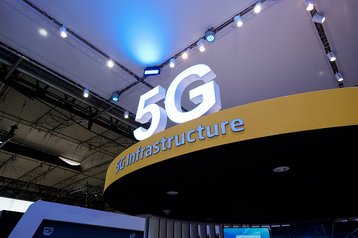Any talk of Edge inevitably comes round to 5G, the next-generation mobile data network, that is due to be deployed over the next couple of years. 5G will offer increased data rates, that we are told will be needed by predicted Edge applications.
After years of preparations, 5G networks began to appear in April and May 2019. SK Telecom and others are offering it South Korea, Verizon and AT&T have launched in the US and EE has 5G in the UK. Other countries and networks will follow swiftly - possibly by the time you read these words.
Early testers say the technology is living up to expectations. TechRadar clocked speeds of more than 1Gbps in the US, and around 500Mbps in the US, which is much faster than 4G networks.
This article appeared in the July issue of DCD Magazine. Subscribe for free today.
The new New
Like previous generations, 5G upgrades the core networks run by the operators, and also the radio protocol by which they communicate to end-users and devices. The new radio technology, helpfully called 5G NR (for “new radio”) could offer speeds up to 20Gbps, but that speed will be a largely theoretical one - much like the 2.4Gbps top speed that none of us get from today’s LTE networks.
5G NR operates in two frequency bands, one below 6GHz (normally 3.5GHz), and the other is in the mmWave band, between 30-300GHz. The lower frequency band most like existing networks, is most commonly deployed now, and offers a moderate improvement over 4G. The mmWave option is deployments more exotic and likely to give faster speeds, at the cost of a shorter range, which will require many more base stations to be deployed.
Again, like previous generations, the technology will come in gradually, using “non-standalone” mode to share the existing core network.
The media is asking about 5G handsets, hotspots, routers and other paraphernalia used by humans. The digital infrastructure industry will want to know: what can 5G do for Edge applications, like the IoT and autonomous vehicles?
For the Internet of Things, the important thing will be equipment to support machine-to-machine communications for the IoT’s sensors - 75 billion of which are predicted to be hooked up by 2025. The standards support low power wide area (LPWA) networks, with options including NB-IoT (narrowband IOT) and LTE-M (LTE-machine type communication).
But these sit somewhat strangely in the 5G hype, as they were already defined for the previous 4G standards, and they deliberately use a lower speed than is being pushed as the major benefit for end-users.
The fact is that the IoT may have billions of sensors, but they mostly don’t need high bandwidth. They tick along handing over small packets of temperature readings or other data, and mostly need a long battery life and good coverage. 5G can potentially offer the first, but it will be some while before it approaches the second. For a long time to come, the IoT will find 4G completely adequate.
Some hope that autonomous cars could be the “killer app” for 5G. Duncan Ellis, of data center IoT firm Wave2Wave says it would be too expensive for them to carry enough processing to be fully autonomous. Instead, they will need sub-millisecond responses from external pattern recognition to avoid obstacles such as pedestrians.
But even 5G includes delays, and the possibility of lost signals, so there’s a strong strand in autonomous vehicle work trying to compress more of what is needed into the vehicle, effectively pulling back from relying on 5G.
Paradoxically, the application which will really stress 5G networks may be those human users we talked about earlier. They are pumping the same kind of data they always have, but they are doing it faster than ever before, and that may change things,
“With constraints like energy utilization and latency, we can’t keep going back to a centralized data center infrastructure,” said Ellis in a recent DCD webcast. One user taking 1Gbps of data would effectively take the entire backhaul available in one of today’s cells.
Fiber to the cell towers might ease that bottleneck, but that will be expensive. For now, the network will have to get better at moving the data closer to users. “This represents a huge challenge for those building networks, because you have no way of knowing at any time where the data flow is going to,” says Ellis.
In the end, the biggest Edge application on the 5G network, could be the 5G network itself, and its human users.


